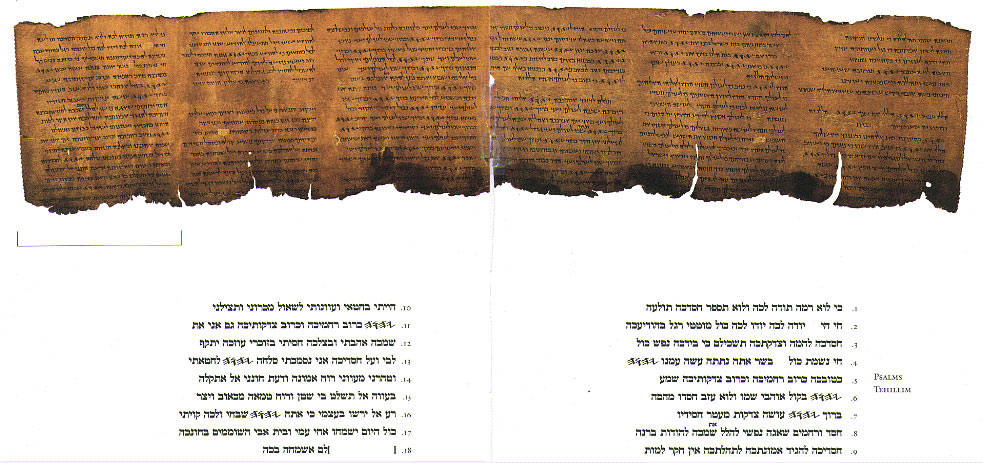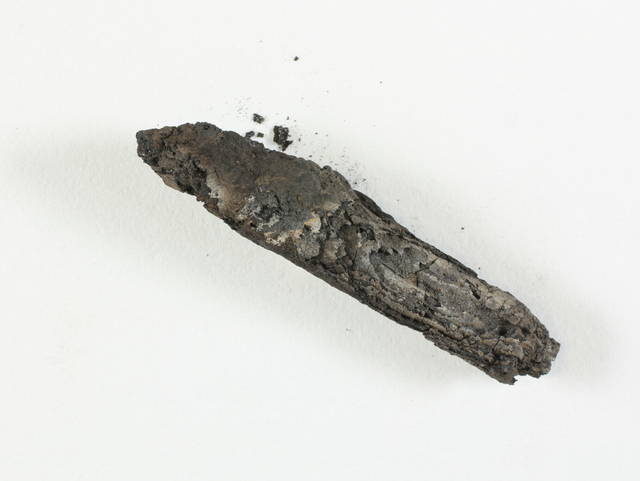Does AI Challenge Biblical Archeology?
Many surviving documents are so damaged that they cannot be read using traditional methods.The Dead Sea Scrolls, found by a shepherd boy in 1947, dating from roughly 200 BC through 100 AD, were remarkably well-preserved. They featured much older texts, like this Psalm:

Exciting finds like the Scrolls and the hieroglyphs of ancient Egypt tempt us to think that when a lost document is found, we will easily physically read it once we understand the language.
Sadly, many surviving documents are so damaged that they cannot be read using traditional methods. All we know is that they are/were documents. Consider the En-Gedi Scroll from about 300 AD:

Believe it or not, AI can help decipher such badly damaged ancient texts:
Nowadays, the 1,700-year-old En-Gedi Scroll—one of the most ancient snippets of the Old Testament ever uncovered—isn’t much to look at. Ravaged by a fire that consumed a Jewish synagogue around 600 CE, the document transformed from a supple scroll into a charred, brittle cylinder of charcoal. The artifact is so delicate that, for decades, scholars dared not even attempt to peel back its layers for fear of destroying it for good.
But several years ago, a team of computer scientists led by University of Kentucky’s Brent Seales managed to crack the scroll’s contents without physically unfurling it. The non-invasive method, called “virtual unwrapping,” extracted intel from the burnt scroll with a combination of scans and image-processing algorithms.
Katherine J. Wu, “From ashes to AI: How technology puts a new lens on ancient texts” at NOVA
And so what did the researchers find?
These images reveal the En-Gedi scroll to be the book of Leviticus, which makes it the earliest copy of a Pentateuchal book ever found in a Holy Ark and a significant discovery in biblical archeology. Without our computational pipeline and the textual analysis it enables, the En-Gedi text would be totally lost for scholarship, and its value would be left unknown.
William Brent Seales, Clifford Seth Parker, Michael Segal, Emanuel Tov, Pnina Shor and Yosef Porath, “From damage to discovery via virtual unwrapping: Reading the scroll from En-Gedi” at Science Advances ( open access, September 21, 2016)
The job of deciphering is still difficult for a variety of reasons. But that’s a giant step forward from impossible.
How will AI affect jobs in Biblical archeology? Well, the more scrolls are deciphered using AI methods, the more archeologists will have to study and write about. Their challenge is the years they must spend learning even more about ancient languages and cultures, to help the rest of us make sense of a vast cultural past.
Note: The Dead Sea Scrolls fragment is public domain. The En Gedi Scroll fragment is from the Israel Antiquities Authority (CC-BY-SA-3-0)
Further reading:
Will AI end astrophysics as we know it? Astrophysicists will certainly be spending much less time staring at very slowly changing skies. Far from reducing jobs in astrophysics, AI is likely to create many more of them. As far more information becomes available, talented people will be needed to interpret, teach it, and write about it for the public.
Maybe the robot will do you a favor and snatch your job. The historical pattern is that drudgery gets automated, not creativity.
and
Robot-proofing your job, Peter Thiel’s way. Jay Richards and Larry L. Linenschmidt continue their discussion of what has changed—and what won’t change—when AI disrupts the workplace
